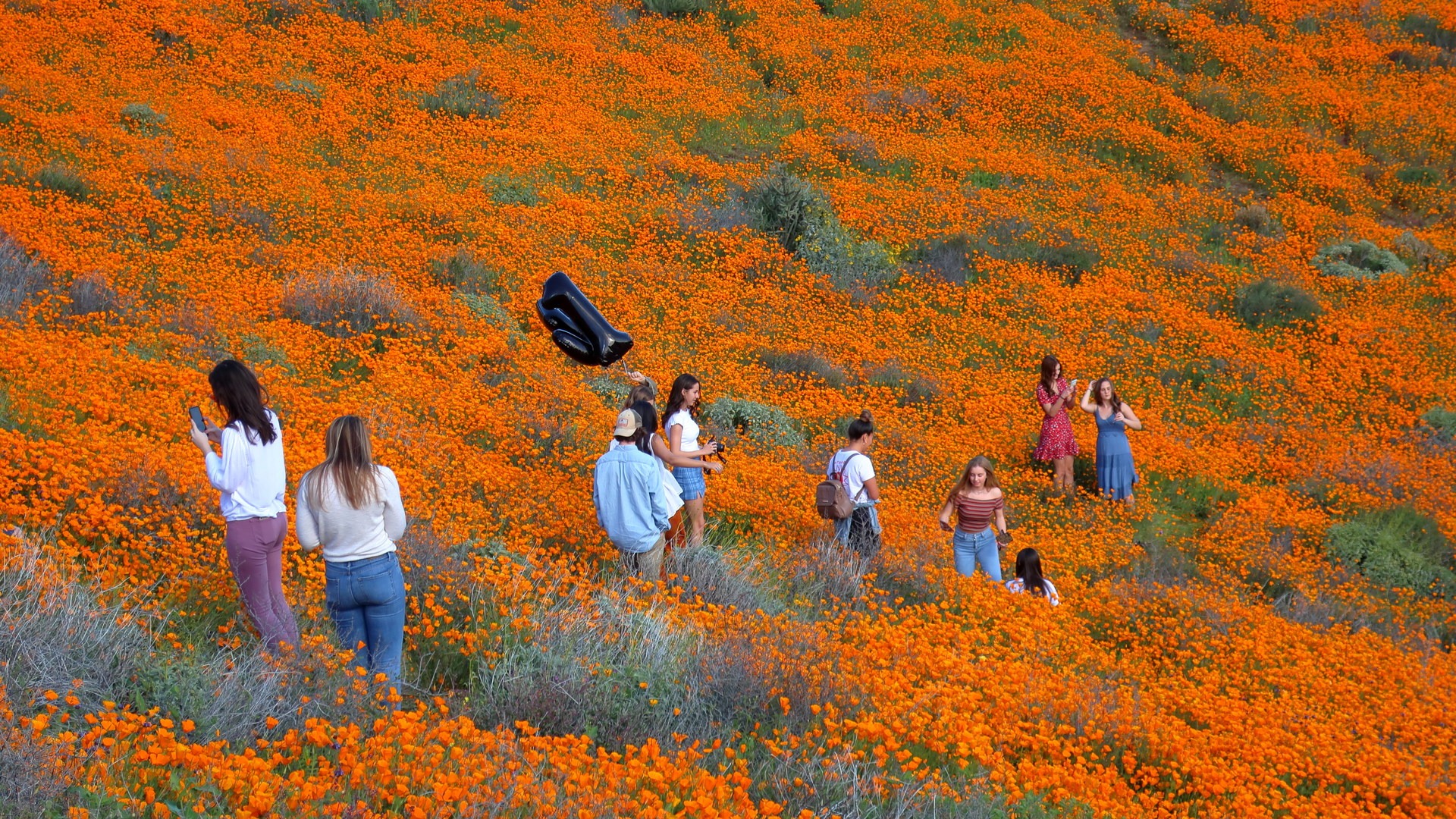Over the past decade, outdoor recreation participation has seen steady growth. More and more people are heading outside. And more people means more impact, especially to places sufficiently accessible for those looking to share that unbeatable selfie on social media. Half of the population in the United States takes part in some form of outdoor recreation every year, and almost all of this happens on public lands.
The effects of this increase in recreation has become regular news coverage, generally with the tagline that some of our favorite places are being “loved to death.” This past month, the well-reported poppy superbloom in southern California caused impacts to the flower-covered hillsides and also caused economic disruption from a “superbloom” of visitors driving through the town of Lake Elsinore, California, to reach Walker Canyon. While outdoor recreation can (and economic survey data show it does) create a sustainable economic structure for towns nearby, too much all at once can overwhelm services. Too many visitors are also creating new impacts to the trails and wilderness areas that are nearby.
So are these places being loved to death? It’s a convenient argument to make.
According Leave No Trace’s most recent survey of public land managers, the most common impacts from visitors to public lands are trail erosion, introduction of non-native species, damage to vegetation, and trash left by visitors. Yet interestingly, a large percent of land managers also reported that impacts in the areas they manage are actually going down due to broad and successful educational efforts.
Which brings me to what gets lost in the “loved to death” narrative. While visitation is up, infrastructure investments are going the other direction. Our favorite places on our public lands are not being loved to death as much as they are being neglected by the management agencies tasked with maintaining them. It's as if our favorite trailheads are gas-station bathrooms where the attendant has decided it’s no longer worth the time to scrub.
This analogy is more apt than it should be. If someone provides a trash can and a toilet, it’s commonsensical that whoever put it there is managing it. What happens when that group stops cleaning it regularly, especially when more people show up? Should we blame the person who had to use it?
Public spending on our public lands has declined by 15% while usage has increased by the same amount. Factor in that a much larger share of the spending each year goes to emergency services such as fighting wildfires, and the spending on infrastructure and maintenance for outdoor recreation takes an even more substantial hit.
Clearly, our federal government's spending priorities are not aligned with use. Our public lands are being loved for their natural beauty and the amenities they provide, but the death is coming from a failure to invest in maintaining and protecting what we love. For this reason, I also support introducing permits for areas that are being over-impacted. Permits work. They spread crowds out to new areas, raise more funds using the market-based solutions for areas in high demand, and ensure areas that are loved aren’t overwhelmed by too many visitors. This is another aspect of investing in maintenance that should be included in a robust toolkit for land management agencies.
So the next time you are at a trailhead and the trash can is full, please still take your garbage with you, and if you’re feeling courageous, ask others to do the same. Follow the trail signs, and if there aren't any, stay on existing paths and be careful not to disturb plants and wildlife. Consider planning ahead to find nearby trailheads that are less popular. And then politely send a note (and a vote) to your elected officials, even if they already agree with you, telling them it’s time we invest the needed funding to maintain and improve our beloved lands, and even put in place the permit systems some of them so desperately need, so they can withstand the increased visitation from all of us who love to recreate outdoors.





Comments
But if you spout out "awareness", "education", "best practices" and "tool box" (like people do not already know garbage does not go in the river) then you are free to continue destroying our natural spaces for your own personal gain while pretending you are some outdoor savior.
Sign In and share them.